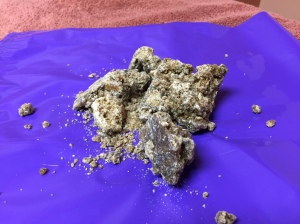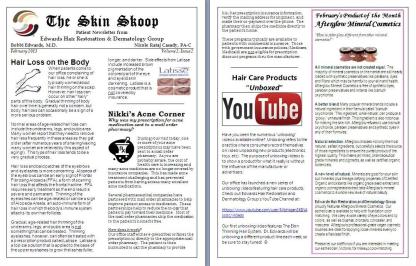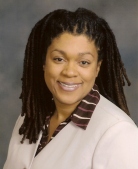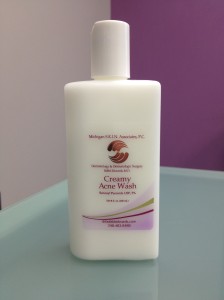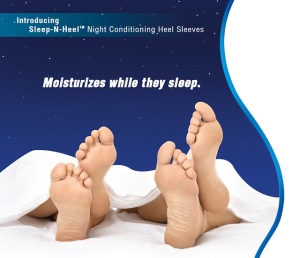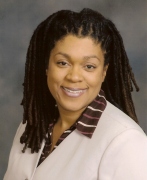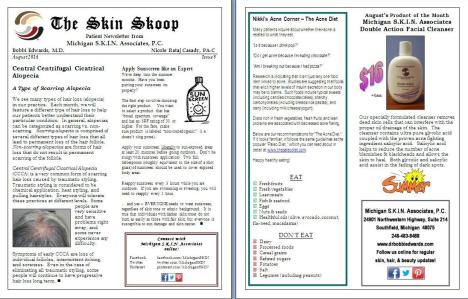Introducing the ARTAS Robot!
 Edwards Hair Restoration and Dermatology Group is excited to announce the arrival of the first ARTAS System robot for hair transplantation in Metro Detroit!
Edwards Hair Restoration and Dermatology Group is excited to announce the arrival of the first ARTAS System robot for hair transplantation in Metro Detroit!
Robotic technology allows for permanent hair restoration WITHOUT the pain and stitches associated with traditional hair transplants. Recovery time is fast, with most patients returning to work and other activities within a few days.
How does it work? The ARTAS robot identifies your optimal hairs to use for transplant (these hairs are typically taken from the back of the head – see video clip here: http://youtu.be/XQwiOQMLl4U). Hair is selectively harvested with robotic precision to preserve the natural look of your donor area. Dr. Edwards then transplants the hair into the thinning and bald areas. Patients observe noticeable, permanent, thicker hair growth in 4-6 months. This hair will continue to fill in over the next year.
 The ARTAS robot was designed with the patient in mind. In the past, hair transplants could be a difficult proposition. Patient feared unnatural or pluggy hair results. Previous transplant techniques were more invasive, requiring stitches and many weeks of recovery time. Even after recovery, patients often lived with an annoying and obvious line scar in the back of the head, resulting in the feeling of scalp tightness and hair style limitations.
The ARTAS robot was designed with the patient in mind. In the past, hair transplants could be a difficult proposition. Patient feared unnatural or pluggy hair results. Previous transplant techniques were more invasive, requiring stitches and many weeks of recovery time. Even after recovery, patients often lived with an annoying and obvious line scar in the back of the head, resulting in the feeling of scalp tightness and hair style limitations.
With the ARTAS robot, patients can now expect great-looking results without the downsides of older techniques. Hair plugs, invasive surgery, and long recoveries are things of the past.
For more information and to contact our office for a hair loss consultation, please visit http://drbobbiedwards.com/ARTAS
Nikki’s Acne Corner – What’s the difference between Acne and Rosacea?
“I came to the office to have my acne treated, but they said I have rosacea. Isn’t that the same thing?”
 Acne and rosacea are two very common skin conditions that we treat on a daily basis. According to the American Academy of Dermatology, an estimated 40-50 million Americans suffer from acne at any one time – acne is the most common skin problem in the U.S. (AAD reference). The National Rosacea Society estimates that 16 million American suffer from rosacea, the majority of which go untreated (NRS reference). While both conditions can cause red, inflamed bumps on the face, acne and rosacea are different and often require a different approach in treatment.
Acne and rosacea are two very common skin conditions that we treat on a daily basis. According to the American Academy of Dermatology, an estimated 40-50 million Americans suffer from acne at any one time – acne is the most common skin problem in the U.S. (AAD reference). The National Rosacea Society estimates that 16 million American suffer from rosacea, the majority of which go untreated (NRS reference). While both conditions can cause red, inflamed bumps on the face, acne and rosacea are different and often require a different approach in treatment.
Acne bumps are thought to be caused by 4 factors: blockage of skin pores, excessive skin oil production, colonization of bacteria within the plugged pore, and inflammation. It remains unclear as to what causes rosacea. Dermatology specialists have observed a genetic tendency in many rosacea patients (i.e. it tends to run in families). Some research has suggested that skin bacteria, skin mites, and certain skin proteins might play a role in the development of rosacea.
Acne can appear as different types of lesions: firm small bumps (“papules”), inflamed pimples, blackheads, whiteheads, nodules and cysts. Many patients can have a combination of these different lesions.
Rosacea can manifest as facial redness and enlarged blood vessels (erythematotelangectatic rosacea), bumps and pustules (papulopustular rosacea), and skin thickening and nose enlargement (phymatous rosacea). Many rosacea patients report a long history of frequent blushing and flushing of their facial skin. Rosacea patients often complain of irritated, itchy, and/or dry facial skin.
To make things more complicated, it is entirely possible for an individual to have both acne and rosacea lesions on the face!
While acne and rosacea are different conditions, many topical and oral medications exist to help manage both problems. Be sure to consult with your dermatology specialist if you think you may be suffering from acne and/or rosacea.
Connect with our office online!
Facebook.com/EdwHairGrp
Twitter.com/EdwHairGrp
Pinterest.com/EdwHairGrp
YouTube.com/user/MichiganSKINAssoc/videos
March’s Product of the Month – AUTHENTIC African Black Soap
Many individuals purchase what they think to be true African Black Soap, when they have actually purchased an imposter. Our dermatology office is proud to offer authentic African Black Soap to our patients who are interested in incorporating natural products into their skin care regimen. Black Soap is traditionally made from roasted plantain skins, cocoa pod, palm oil, and natural sodium – it is not scented and does not contain chemicals, synthetic ingredients, or fillers. The natural anti-inflammatory ingredients in Black Soap can help with multiple skin conditions, including acne and eczema. Many of our patients incorporate Black Soap into their prescription skin care regimens.
As a consumer, how can you tell the difference?
Imposter Black Soap:
- Hard
- Completely black in color
- Sometimes scented
- Can contain synthetic or chemical ingredients
- Not made from true ancient African recipe
- Can be drying to the skin
- Soft
- Brownish-black color
- Unscented
- All natural ingredients
- Made from true ancient African recipe
- Can help calm inflamed skin conditions
Authentic African Black Soap available for purchase at our office – $5 plus tax.

